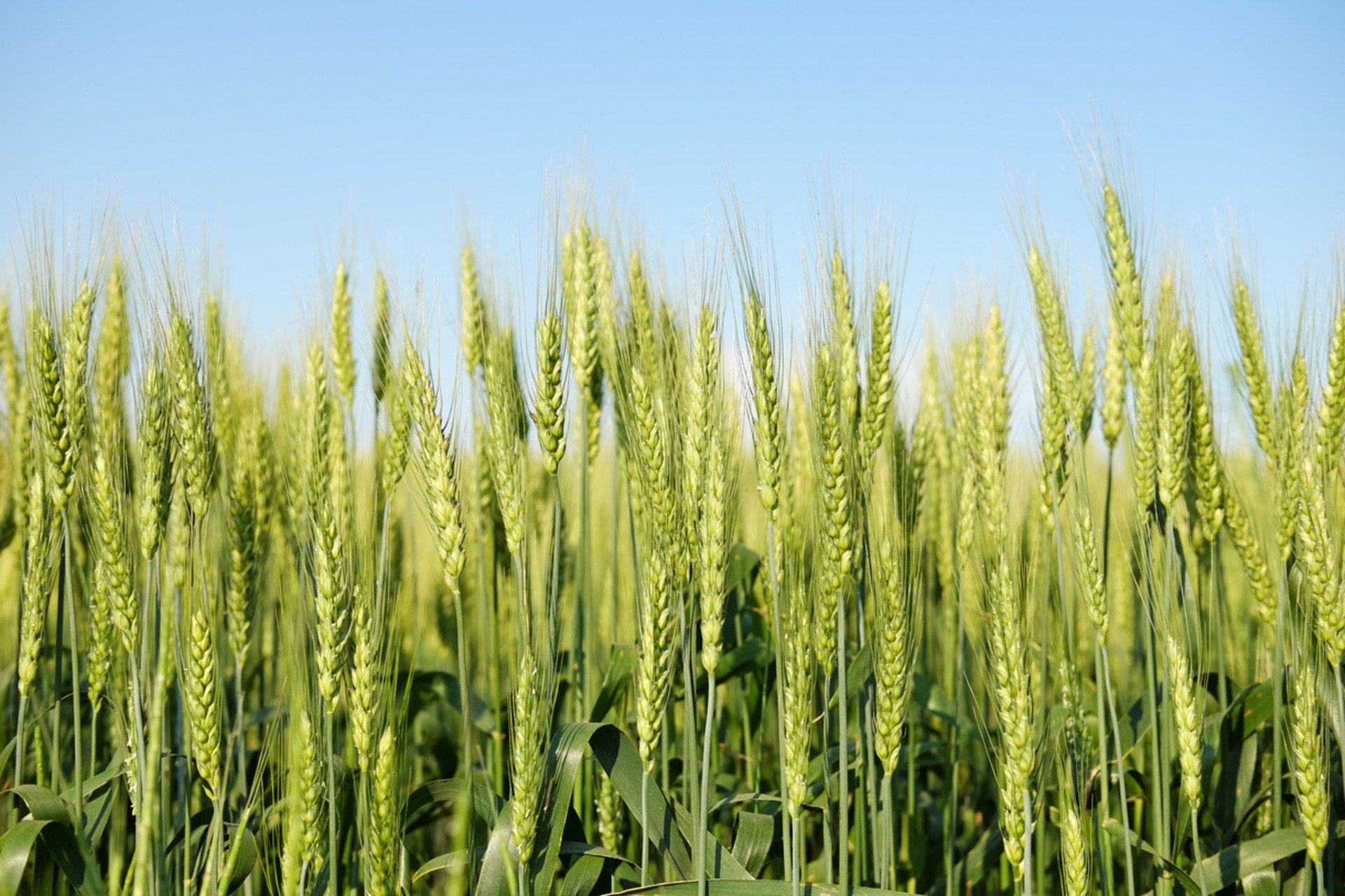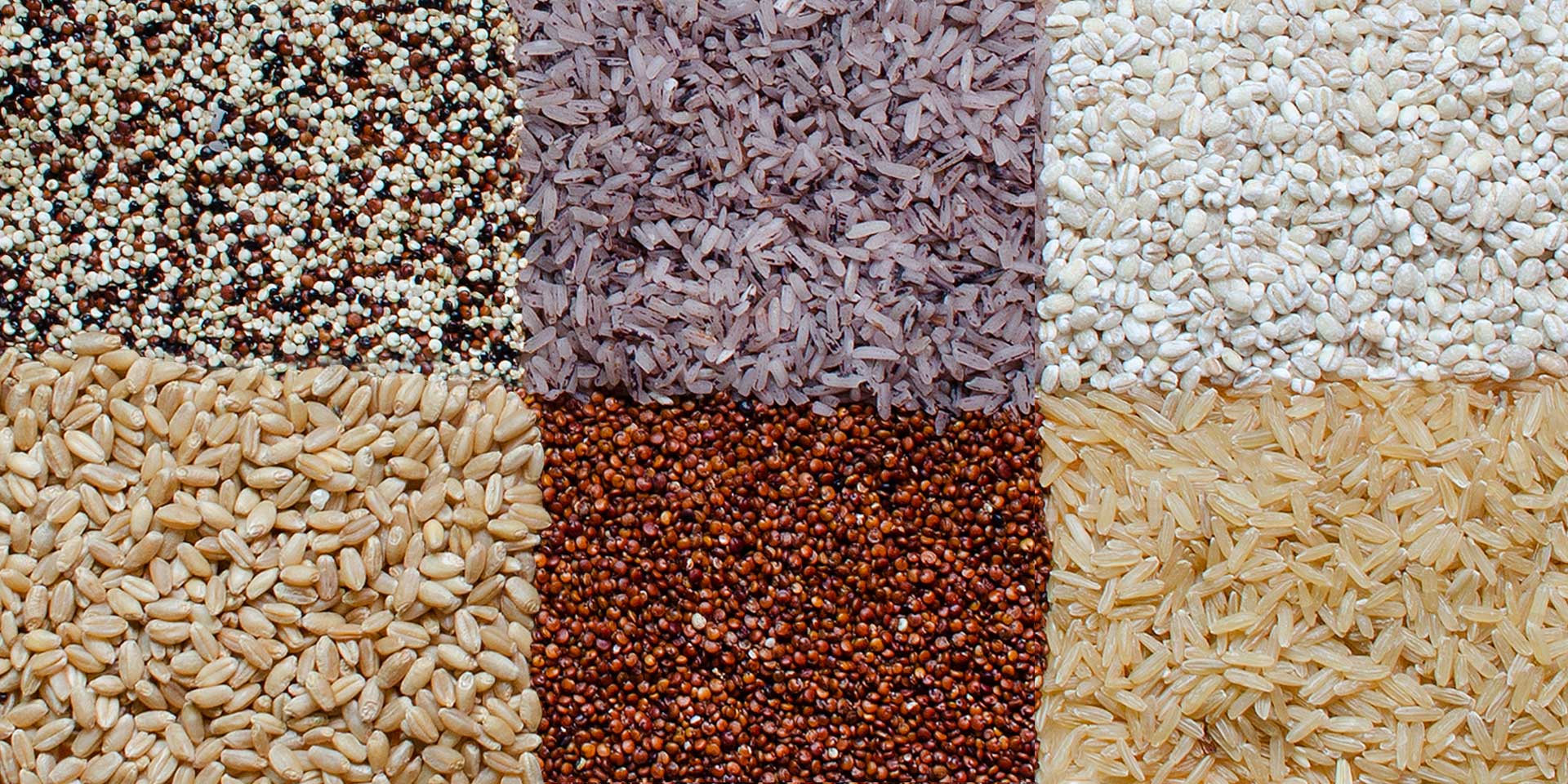Eat more grains — and keep it local
Did you know that the UN has declared 2023 the International Year of Millets, the nutritious, drought-resistant grains already widely grown across Africa and Asia? How much do you know about buckwheat, which isn’t actually wheat (it’s more closely related to rhubarb) and isn’t even technically a grain at all? With FoodPrint’s “Get to Know These Grains and Seeds” campaign, we’ll be diving deeper into these crops and many more — where they come from, how to use them and why they should become mainstays in your kitchen.
There’s a reason we aren’t already eating more types of grains. Much of the country’s grain growing is focused on a few commodity varieties like corn and wheat. Rarely do we find local flours and whole grains or seeds available at the farmers’ market, making this wide world of ingredients a bit of a mystery for many. There is often a lot of confusion (or at least a lack of transparency) as to where a bag of flour, for example, came from to begin with.
As a professor of practice at Oregon State University, my time is focused on supporting local farmers growing food organically. I created the Culinary Breeding Network to build communities of plant breeders, seed growers, farmers, food professionals, retailers and others to improve quality in the food we grow. As I learned more about the “grain chain” — as some call it — I started to understand the complexity of the current system, and why we see fewer of these products available from small, local growers. Once harvested, grain is usually cleaned then moved elsewhere for milling and packing, or for malting and then brewing or distilling. Consolidation has led to the closure of thousands of local mills over the last century, and these and other kinds of necessary “middle infrastructure” for processing and packaging are out of reach for many farmers, making commercial quality for certain grains out of reach as well. This means that few farms in the U.S. sell their own grains directly to consumers or produce their own flour.
Things are slowly shifting as a movement for local grains takes shape: Innovative farmers, like those at Meadowlark Organics in Wisconsin and Farmer Ground Flour in New York, have started to clear the hurdles to process and package on their own properties. Organizations are working to build a sustainable, fully integrated supply chain that allows small growers to grow, process and distribute grains on a local scale. Still, to realize this vision around the country, one thing must be present: demand.
This is where you come in. As consumers, we must choose to support these smaller regional farms and mills by seeking out their products. In doing so, we are also supporting more sustainable agricultural practices: Creating demand for a diversity of grains allows farmers to grow on six-, seven- or even 10-year rotations, which improves soil health, structure and drainage. This year, unpredictable weather patterns and enormous amounts of rain have adversely affected many farms — but those with more diverse rotations and alternative crops (rather than soy, corn or wheat) have been more resilient to damage. Growing a diversity of grain and seed crops is one way to help mitigate the impacts of climate change. Plus, filling up on flavorful, fiber-packed whole grains — or mixing them into dishes like burgers or stuffed cabbage to stretch your protein — can also be a way to lower demand for meat, a major source of greenhouse gas emissions.
FoodPrint’s site can be your resource for learning more about grains and seeds, whether you’re browsing our Real Food Encyclopedia or reading up on the environmental impacts of rice production and the possibilities of Kernza. And for the next six weeks, you can follow along on social media and learn more about the diversity of grains and seeds you can incorporate into your diet. We hope you’ll be motivated to seek out locally milled flours and locally grown whole grains — and to put more of them at the center of your plate.
Books:
- “Grist: A Practical Guide to Cooking Grains, Beans, Seeds, and Legumes” by Abra Berens. Chronicle Books, 2021.
- “Good to the Grain: Baking with Whole-Grain Flours” by Kim Boyce with Amy Scattergood. Abrams, 2010.
- “The New Bread Basket” by Amy Halloran. Chelsea Green Publishing, 2015.
- “Flour Power: The Practice and Pursuit of Baking Sourdough Bread” by Tara Jensen. Clarkson Potter, 2022.
- “Mother Grains: Recipes for the Grain Revolution” by Roxana Jullapat. W. W. Norton & Company, 2021.
- “Southern Ground: Reclaiming Flavor Through Stone Milled Flour” by Jennifer Lapidus. Ten Speed Press, 2021.
- “Gluten-Free Flavor Flours: A New Way to Bake With Non-Wheat Flours” by Alice Medrich. Artisan Books, 2014.
- “Heirloom: Time-Honored Techniques, Nourishing Traditions, and Modern Recipes” by Sarah Owens. Roost Books, 2019.
- “Homegrown Whole Grains: Grow, Harvest, and Cook Wheat, Barley, Oats, Rice, Corn and More” by Sara Pitzer. Storey Publishing, 2009.
- “The Miller’s Daughter: Unusual Flours & Heritage Grains” by Emma Zimmerman. Hardie Grant, 2022.
Organizations, resources and other media:
- “The Movement to Revive Local Grains — and the Infrastructure Required to Keep It Going” by Lela Nargi for FoodPrint
- Artisan Grain Collaborative’s Midwest-focused network
- The Grains & Staples program at Glynwood Center for Regional Food and Farming, led by June Russell
- Greenmarket’s Grain Guide by GrowNYC
- Thousand Bites of Bread’s directory of mills and bakeries
- Culinary Breeding Network’s 2021 Grains Week on YouTube
- Grain Zines by Lost Bread Co.
- Art by Peter Schumann and Kate Blairstone
Read more about grains and seeds on FoodPrint
Get the latest food news, from FoodPrint.
By subscribing to communications from FoodPrint, you are agreeing to receive emails from us. We promise not to email you too often or sell your information.
Top photo by MarekPhotoDesign.com/Adobe Stock.
More Reading
15+ ideas for delicious meatless grilling
July 1, 2025
4 Tips for Stretching Your Food Dollars
April 16, 2025
How to use extra onions
April 9, 2025
Our latest podcast episode on pistachios: The making of a food trend
April 1, 2025
This vegan tiramisu will bring you joy
March 11, 2025
For lessons in thrifty, climate-friendly cooking, look to vintage cookbooks
March 10, 2025
Americans love olive oil. Why doesn't the U.S. produce more of it?
February 28, 2025
How to fight household food waste? Join our Eat Down Your Pantry Challenge!
February 13, 2025
During a period of egg chaos, egg replacements for (almost) any situation
February 7, 2025
Ways to go meatless — or less-meat — in January
January 15, 2025


